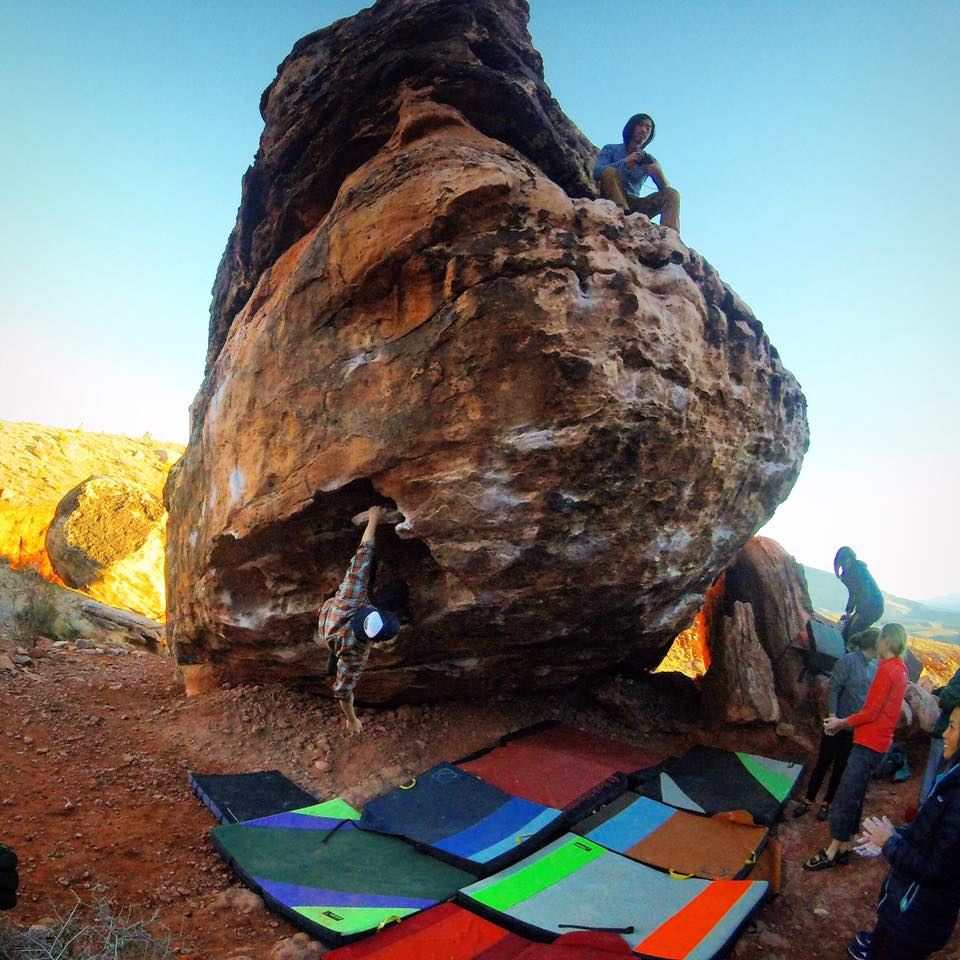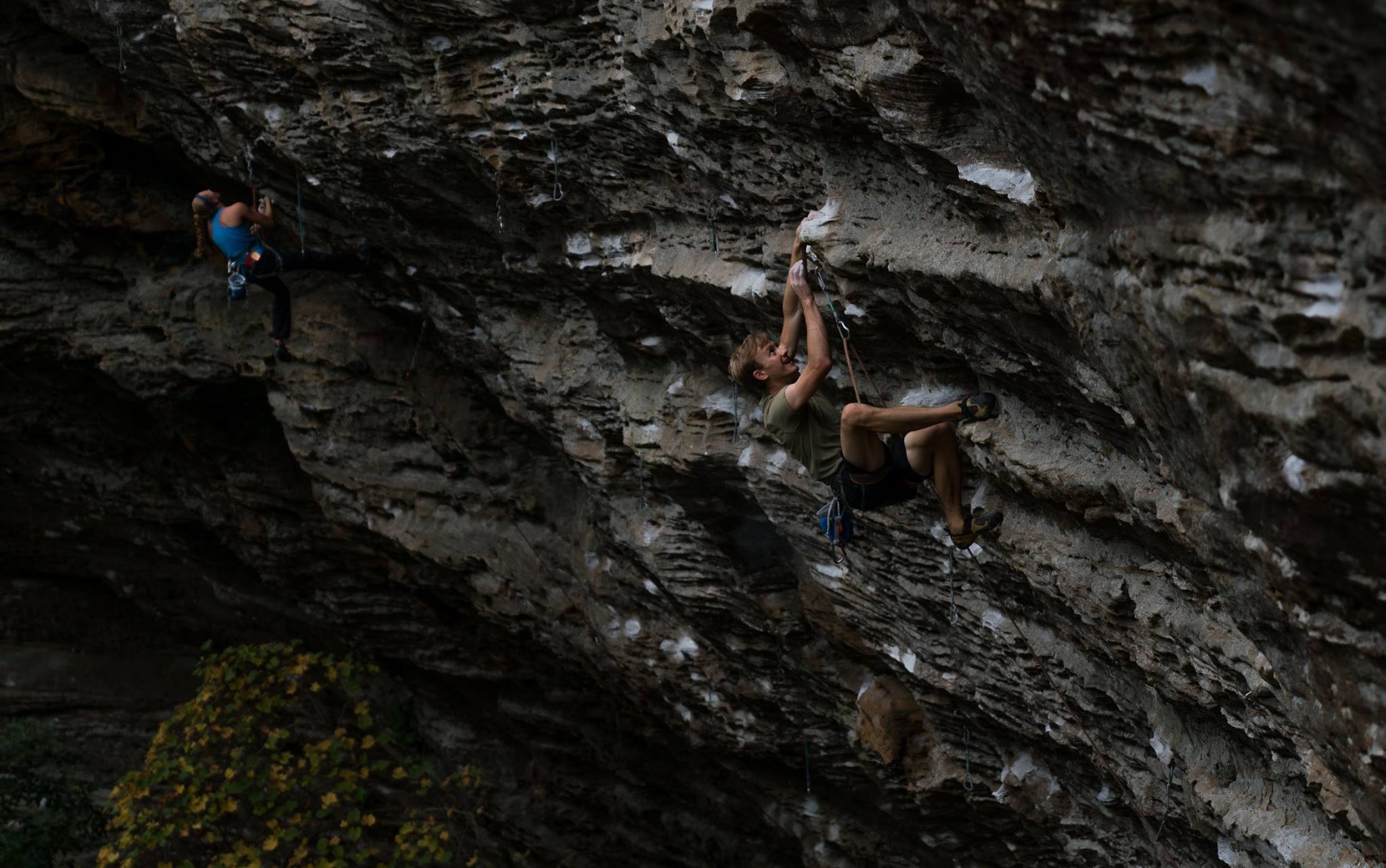This is part 4 in our 5-part series How To Navigate The Crag. If you missed them, be sure to read Part 1: Leave No Trace, Part 2: Crag Etiquette, and Part 3: Learning Local Issues, so you’re up to speed.
Before you go to the climbing gym, you don’t plan your routes. Outside, you have to.
One of the first things you’ll think about when you first start planning to climb outside in a new area is what routes you’ll do. You have limited time, after all – maybe a couple days, at most, before you pile back into the car to make it back in time for work the next day. Maybe you’re paging through a fresh new guidebook, combing through hundreds of routes based on a couple of lines of description and rating alone. How do you pick what to climb when you’re new to climbing outdoors? Nothing’s labeled, of course, but routes are often far apart enough to merit careful choice in selecting where to go for a day.

The simple, first answer is this: If you’re a new climber, thumb through the back of the guidebook, where you’ll likely find an index of routes sorted by grade. Pick a grade perhaps one below your gym level (gym routes rarely feel as difficult as the equivalent grade outdoors for a number of reasons), and look up the best rated routes of that grade. In many cases, because difficulty occurs naturally outside based on the rock itself, you’ll find a number of similarly graded routes near each other, with a couple routes considered high quality “classics.” Head there. Keep in mind, though, that these crags are likely to be the most popular areas around, so plan (and time) your visit accordingly. They’re well-trafficked for a reason – fun movement, non-chossy routes – so there will be tons of beta for new outdoor climbers getting used to movement on real rock.
Once you’ve knocked out some classics over a few trips, though, you might feel the urge to pick an exciting and challenging project to work over the course of a weekend. That creates some strategic necessities you’ll want to consider before you head out:
1: Avoid burnout and injury: have more than one project at first

Here’s a personal anecdote: A few years ago, I was climbing at Smith Rock in Bend, Oregon, and found myself fixated on a 5.12a with one move that required pulling on a one finger pocket – maybe two fingers at most. With few breaks between attempts, I tried and tried on that route, for probably 90 minutes. I never sent it. Want to guess what stopped me?
I strained a tendon from that pocket. I could have prevented that in part by taking my time, trying other routes with different, complementary movements periodically, and just generally being more strategic about my approach to sending a route I really wanted to finish. My point is this: Keep a few different routes in mind, in case your “single project” turns out to be too much, too fast for your skill level. You’ll get your project done eventually – probably much faster if you try a few different routes than if you single-mindedly punish yourself on a single climb. That leads to the next point:
2: Don’t stretch yourself too far in one push
Ultimately, it’s no fun to throw yourself repeatedly at a route that spits you off over and over. Plus, like I did at Smith Rock, you run the risk of injury. Stay modest if you’re new to outdoor climbing. It’s more fun in the long run to grow in wisdom, experience, and great stories, rather than pure strength and a steady uptick in redpoint grades (i.e. the grade you can typically complete not on the first try but after multiple attempts working the moves). This sport is a lifelong journey anyway, where youthful strength is only going to be an arrow in your quiver for a few years. Choosing the right routes for your body and skill will keep you in the game for longer.
Remember that gym grades are not equal to outdoor grades. You might have heard the term “sandbagging” – grading a climb with a lower, easier grade than what it actually deserves. Well, compared to indoor climbing, a lot of outdoor grades feel sandbagged, at least from a gym climber’s perspective. One reason outside routes feel harder: you will spend a significant amount of time route finding outside. Because the holds aren’t marked for you, you’ll need to search for the holds and the best way to hold them, figure out whether the route goes left or right, etc. Route finding takes time and energy, so your on-sight grade (i.e. the grade you can typically complete the first time you try it) will inevitably be lower.
3: Seek fun climbing, not fun sending
Especially in the beginning, as you’re getting used to outdoor climbing, it’s important to pay attention to the routes that are the most fun to climb in the moment, rather than fun to talk about later when you’re telling your friends. There’s a place in the world for Type II fun – after all, those kinds of experiences often enrich the soul most – but in the beginning of your climbing career, climb for fun in the moment rather than fun talking about the achievement. It’s okay to decide at a certain point that you really want to push your skills even if it takes difficult and concerted effort, but for now, make sure you’re having enough fun on your projects to come back out and do more! After all, the more partners we can find at First Ascent, the better.
There’s a place in the world for Type II fun – after all, those kinds of experiences often enrich the soul most – but in the beginning of your climbing career, climb for fun in the moment rather than fun talking about the achievement. It’s okay to decide at a certain point that you really want to push your skills even if it takes difficult and concerted effort, but for now, make sure you’re having enough fun on your projects to come back out and do more! After all, the more partners we can find at First Ascent, the better.
In the next (and final) installment of the series, we’re covering climbing trip logistics: How To Navigate The Crag, Part 5: Planning A Climbing Trip.
By Chris Rooney, FA member and writer.
Photos courtesy of Ed Yu and Chris Rooney.
